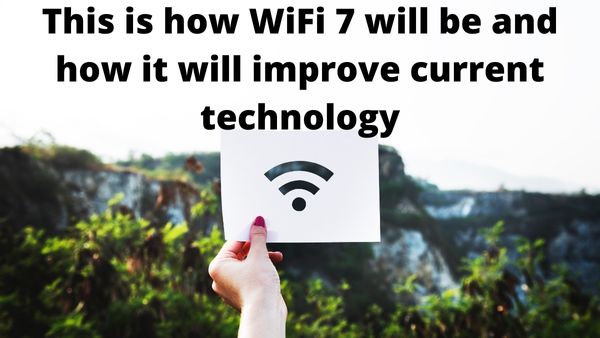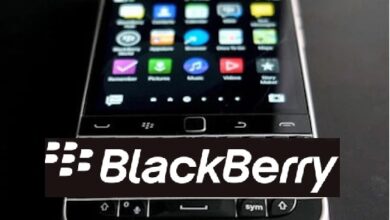This is how WiFi 7 will be and how it will improve current technology

This is how WiFi 7 will be and how it will improve current technology. When announcing WiFi 7, Qualcomm stated that it would not only concentrate on developing capabilities that would bring about extremely high speeds and capacities, but would also greatly enhance low-latency performance.
Qualcomm revealed a WiFi 6 update. In comparison to WiFi 6, the WiFi 7 is the next-generation wireless communication standard and is predicted to have twice the internet speed and half the latency. Even while WiFi 7—a speedier wireless connectivity—has not yet been made available for all devices, it is being developed.
When announcing WiFi 7, Qualcomm stated that it would not only concentrate on developing capabilities that would bring about extremely high speeds and capacities, but would also greatly enhance low-latency performance. The most cutting-edge use cases in XR, Metaverse, social gaming, edge computing, and other areas will be centred around the combination of latency, speed, as well as capacity increases in Wi-Fi 7, according to a blog post by Qualcomm.
Another chipmaker, MediaTek, had stated that WiFi 7 would be three times as fast as WiFi 6. In addition, the WiFi 7 will provide a number of innovations, such as a potent MLO feature that will allow the construction of multiple links across several bands.
What is WiFi 7?
You must have noticed that most high-end devices have support for WiFi 6 in their spec sheets. You are curious about what that is, but because you don’t care to read much, you figure it has to do with WiFi speed and that the greater the number, the faster the connection. Devices compatible with WiFi 7 will be available in the future. So what does it actually mean?
It is stated that the WiFi 7 is three times faster than the WiFi 6 as well as is an enhancement over the WiFi 6. The 30Gbps transfer rate of the new wireless communication standard is impressive. When comparing WiFi 6 with WiFi 7, the latter is a tremendous improvement over the former, which has a transmission rate of 9.6Gbps. 320 MHz single-channel bandwidth is used by the WiFi 7.
This represents a significant improvement over WiFi 6 as it only needs 160MHz of bandwidth. Greater bandwidth will make it possible for more devices to connect to it. As more people could connect their devices to the network and speed was not impacted, it would be especially helpful in workplaces, eateries, and train stations.
Multi-link capabilities, modulation evolution, flexible channel utilisation, and 320Mhz channel bandwidth are some of the characteristics that the WiFi 7 has to offer. According to Qualcomm, Wi-Fi 7’s multi-link functionality gives a client a variety of ways to utilise these channels.
What will we have with him
It’s important to remember that the 6’s predecessor was incompatible with earlier standards. This implies that any home appliance we purchase will either support WiFi 6 or not. Additionally, it uses less energy than its forerunners did while in use, allowing for extended battery life in smartphones and laptops.
In this manner, what is accomplished is that this is a new WiFi specification created to improve the restrictions we had with 6. These are what they are:
Arrival of the 6 GHz band
One of the most major modifications to WiFi 6 that WiFi 7 will bring about is this. The two radio frequency bands that are now in use are 2.4 GHz and 5 GHz. But the concept is that the 6 GHz band will be included in the seventh generation. This should theoretically triple connection speeds, increasing them to 40 Gbps.
Backward compatibility
You should also be aware of the fact that WiFi 7 can be utilised by devices that are already compatible with earlier versions.
Reduction of latency
This enhances content streaming in real time.
Bandwidth of 320Mhz
WiFi 6, the most recent standard to be released, offers a 160 Mhz bandwidth.
Multilink connections
This enables it to utilize all available bands and channels, greatly enhancing your connection and minimizing interference from obstacles like walls.
Everything points to us being able to use this new protocol and its incredible speed by 2023, although as chip companies like MediaTek and Broadcom have acknowledged, we may see some trial demonstrations of it in 2022.
Discover the secrets of network management with our guide on ‘How To Kick Off Other Devices From Your WiFi Network,’ ensuring a smoother and more secure online experience.
Will Replace Ethernet Cables
Anyway, one question: Why is WiFi 7 already being sought after if number 6 is a fresh addition? Of all, this is what anybody upgrading to new WiFi wants: faster speeds, greater dependability, and greater range. The future generation will, in principle, grant these three wishes.
What’s more, firms who have already begun producing chips for it have already made the claim that the new standard will displace Ethernet connections. Despite how quickly it is, wired networks still function fundamentally differently than wireless ones, so you must take this information with a grain of salt.
Creating a local wireless network with sufficient characteristics to take the role of existing wired networks is the major goal. Indeed, according to MediaTek executives, the release of WiFi 7 “will mark the first time the network can be a true cable/Ethernet substitute for high bandwidth apps«. These applications include the Metaverse, remote work, streaming games, cloud services, virtual reality, as well as augmented reality, a few of which have not up until now properly operated on wireless networks.
Not Just Speed, But WIFI 7
Manufacturers already are functioning on WiFi 7, the next generation of wireless networks, which will be far quicker than the present version and may even be able to match the cable’s data transfer speed, even though WiFi 6 is just three years old (with freedom of movement throughout the space covered by the WiFi network).
- How to use Chromecast without WiFi
- How to View Saved Wifi Password on Android Without Root
- How Does WIFI work
Therefore, it is known by its technical name, IEEE 802.11, even if the WiFi Alliance, the organisation in charge of standardising the systems, popularised the designation by using its name followed by the number according to the generation and band spectrum that they utilise.
Given that they now operate at a maximum speed of close to ten gigabits per second, it is estimated that this new network will be up to 3 times faster than the existing ones (Gbs). But there’s more: How does this compare to WiFi 6 at the moment?






